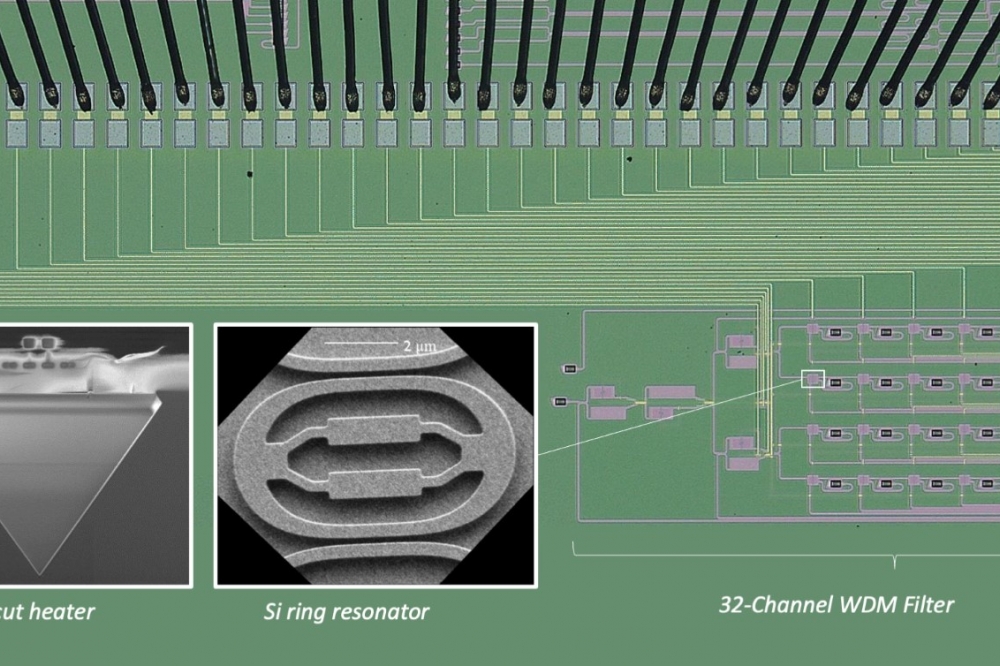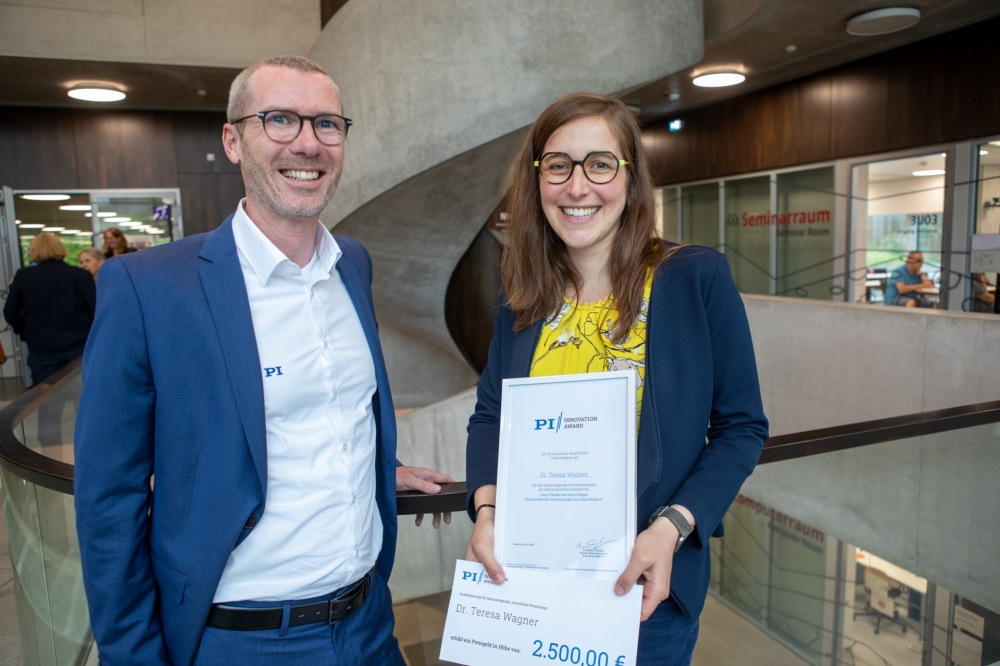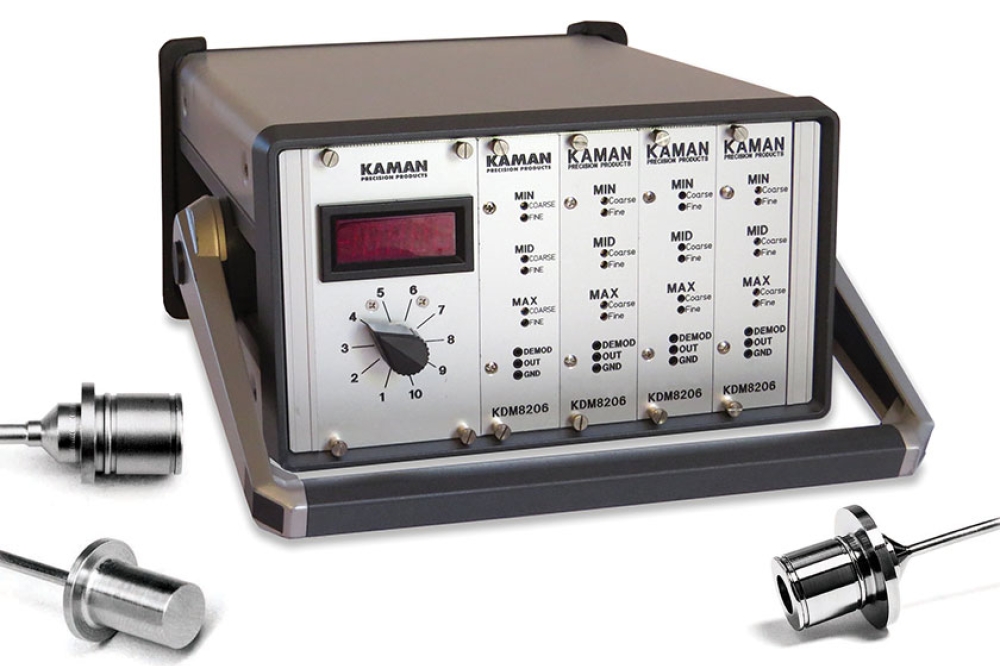Imec demonstrates compact 32-channel silicon-based wavelength filter

Features low loss and high tuning efficiency.
In a top-scored paper at the OFC Conference (San Diego), imec has presented a major advancement in silicon-based wavelength-division multiplexing (WDM) capability. A compact 32-channel silicon-based wavelength filter is demonstrated for the first time with low loss and high tuning efficiency, enabling a 4x increase in the number of transmitted and received wavelength channels compared to today’s commercial transceivers. The demonstrated capability will enable continued scaling of the bandwidth density and power efficiency of next-generation silicon-photonics-based transceivers, addressing the requirements for short-reach optical interconnects in high-performance AI/ML compute clusters.
Continued scaling of optical interconnects is essential for achieving further performance and efficiency gains in AI/ML compute clusters. Silicon photonics is a key technology platform for cost-effective integration of Tbps-scale transceivers, but the demanding requirements for bandwidth density, power efficiency, and latency in AI/ML system interconnects require substantial improvements at the process, device, and circuit level. For example, scaling up link bandwidth by adding more wavelength channels is typically associated with significant optical losses and excessive tuning power when using silicon-integrated components.
By combining the advanced Si patterning capability in imec’s 300mm Silicon Photonics platform (iSiPP300) with innovative and highly optimized designs of Si ring resonator and interleaver components, imec has overcome these challenges, realizing a WDM filter with 32 wavelengths at 100GHz channel spacing in the O-band, matching the specifications of the CW-WDM multi-source agreement (MSA). Owing to the careful design optimization, low optical insertion losses of about 2dB and crosstalk levels better than 16dB are maintained, even at this high channel count. By leveraging imec’s local Si substrate undercut process and optimized heater designs, the thermo-optic tuning efficiency is among the best-reported values at 290GHz/mW.
Joris Van Campenhout, fellow and R&D program director at imec: “Imec’s optical I/O R&D program aims at disruptive scaling of both bandwidth density and power consumption of silicon-integrated optical interconnects, which often present conflicting requirements. Our new 32-channel WDM filter enables Tbps-scale aggregate bandwidth per optical fiber using individual lane rates of only 32Gbps, enabling error-free link operation without power-hungry digital signal processing. Leveraging its compact footprint, low optical losses, and high wavelength tuning efficiency, the demonstrated WDM filter opens a pathway to Tbps/mm-scale optical interconnects with overall power efficiencies of just 1pJ/bit.”

































